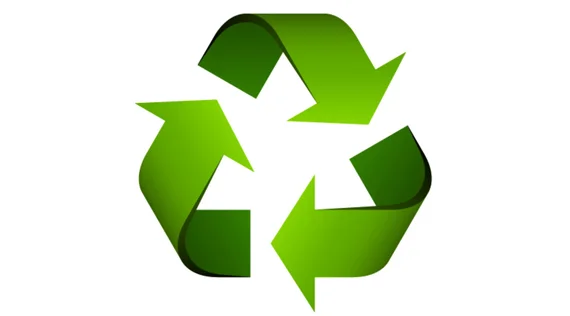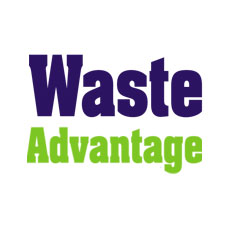The Future of Wood Waste: Transforming Waste into Power, Efficiency, and Sustainability
April 03, 2025 02:05:41 AM
Facilities producing biochar can sell it or use it for additional environmental benefits.

SEATTLE (Waste Advantage): The U.S. generates more than 70 million tons of wood and vegetative waste annually from forestry operations, urban development, disaster recovery, and agriculture. Managing this vast volume presents significant challenges, straining landfill capacity, disrupting forestry operations, and complicating post-disaster cleanup efforts. Traditional disposal methods—chipping, grinding, hauling, and open burning—are not only inefficient, but also expensive, labor-intensive, and environmentally damaging. These methods contribute to air pollution, carbon emissions, and soil degradation, underscoring the urgent need for sustainable and cost-effective waste management solutions.
With landfill capacity shrinking and environmental regulations tightening, waste management professionals are facing increasing pressure to find sustainable solutions. But what if wood waste was not just a problem, but an opportunity?
New, cutting-edge technologies are now making it possible to eliminate wood waste efficiently while producing valuable byproducts, such as renewable energy and biochar. Mobile air curtain burner systems are changing the game for landfills, municipalities, forestry operations, and disaster response teams—turning a costly burden into a sustainable, profitable solution.
The Problem: The Rising Cost of Wood Waste Disposal
For decades, wood waste disposal has relied on four primary methods, each with major downsides:
- Hauling to Landfills—As landfill space becomes increasingly limited, costs are skyrocketing. Additionally, the carbon footprint associated with transporting debris is a growing concern.
- Chipping and Grinding—This method is energy-intensive, requires frequent maintenance, and decaying wood chips are a significant source of methane—a major climate forcer. Once the waste is chipped it still requires hauling to a landfill.
- Open Burning—Highly polluting and often banned due to air quality regulations and fire hazards.
- Composting—Not always viable for large volumes of woody debris, particularly after natural disasters or from forestry operations.
None of these methods offer a truly sustainable, long-term solution. The waste keeps accumulating, while disposal costs continue to rise, and regulatory pressure increases.
Enter mobile waste elimination technology, which not only reduces waste volume by 95 to 98 percent, but also transforms wood waste into valuable resources like biochar and renewable energy.
Beyond Disposal: Turning Wood Waste into Value
Instead of treating wood waste as a liability, facilities using air curtain burners technology are turning it into an economic and environmental asset. Key benefits of this mobile waste elimination technology are that it:
• Eliminates the need for chipping, grinding, and hauling.
• Reduces landfill space consumption—resulting in major cost savings.
• Generates biochar—a byproduct with agricultural and carbon sequestration benefits.
• Produces power to charge electric equipment, vehicles, and battery storage modules.
• Drastically reduces emissions compared to traditional disposal methods.
The Right Tool for the Job
There are three primary air curtain burner solutions for waste and debris elimination, biochar production, and renewable energy generation.
#1: Onsite Waste Reduction System
Used by landfills, forestry operations, and disaster recovery teams, these systems actually “eliminate” the waste. Grinding only reduces the volume—10 tons of waste into a grinder and 10 tons of chips come out. If 10 tons of waste go into an onsite air curtain burner waste reduction system, only 400 lbs. of clean carbon ash and biochar remain.
This matters because, these types of systems save millions in landfill costs, reduces methane emissions, and eliminates fire hazards. A single portable and self-contained system requires no permanent facilities. It processes up to 13 tons of wood waste per hour—one operator can manage multiple units, allowing for the elimination of hundreds of tons daily. It can also be deployed rapidly in disaster zones for immediate debris management.
#2: Mobile Biochar Production
Forestry operations, wildfire recovery teams, land restoration projects primarily use this efficient system to converts wood waste into biochar—a valuable byproduct for agriculture, carbon sequestration, and erosion control. This is important because it helps facilities profit from waste while supporting carbon-neutral initiatives. Processing 1 ton of waste per hour, and producing 500 pounds of biochar—a highly marketable and sustainable soil amendment—it is easily deployable to remote locations for onsite biochar production.
#3: Turning Wood Waste into Energy
Converting wood waste into electricity and reducing reliance on fossil fuels, a portable biomass biocharger is used by remote forestry operations, land clearing operations, off-grid facilities, municipalities and military applications because it provides off-grid power for electric machinery, vehicles, and critical infrastructure.
As an off-grid solution, it eliminates 10 tons of wood waste per hour while generating more than 100 kWh of electricity. In addition, more than 500kWh of Energy is stored in a battery storage module, which is used to charge equipment and vehicles.
Industry Trends: Why Landfills and Municipalities Are Making the Switch
Stricter Environmental Regulations
The EPA and state agencies are imposing tighter restrictions on open burning, landfill emissions, and air quality. This technology meets and exceeds these standards—positioning it as a future-proof investment.
Rising Costs of Waste Hauling and Disposal
With landfill tipping fees increasing and space dwindling, many facilities are under pressure to maximize efficiency. These types of systems reduce landfill dependence and extends facility lifespans.
The Growing Biochar Market
Biochar applications in agriculture, carbon offsets, and soil restoration are growing rapidly. Facilities producing biochar can sell it or use it for additional environmental benefits.
The Future of Off-Grid Power
With the increasing adoption of electric vehicles and battery-powered equipment, these waste-to-energy solutions provide a sustainable, off-grid power generation alternative for remote and industrial operations.
The Future of Waste Management: A Smarter Approach
Sustainable waste processing is no longer an option—it is a necessity. With air curtain burner technology, facilities can eliminate wood waste more efficiently than grinding or hauling, reduce emissions, and comply with environmental standards, as well as generate power for vehicles, equipment, and off-grid applications.
Courtesy: www.wasteadvantagemag.com
Scrap Metal Prices
| Copper Scrap | |
| Alternator | 0.39 (0) |
| #1 Copper Bare Bright | 4.12 (-0.04) |
| Aluminum Scrap | |
| 356 Aluminum Wheels (Clean) | 0.80 (0) |
| 6061 Extrusions | 0.70 (0) |
| Steel Scrap | |
| #1 Bundle | 390.00 (0) |
| #1 Busheling | 410.00 (0) |
| Electronics Scrap | |
 By
By 


